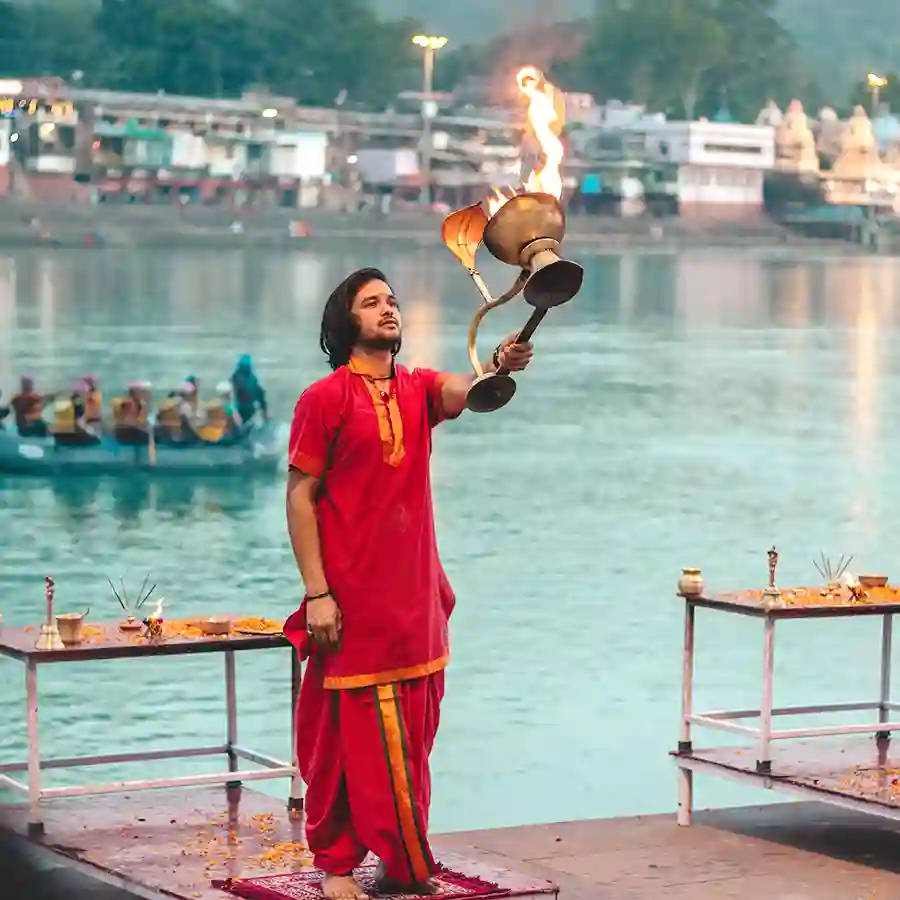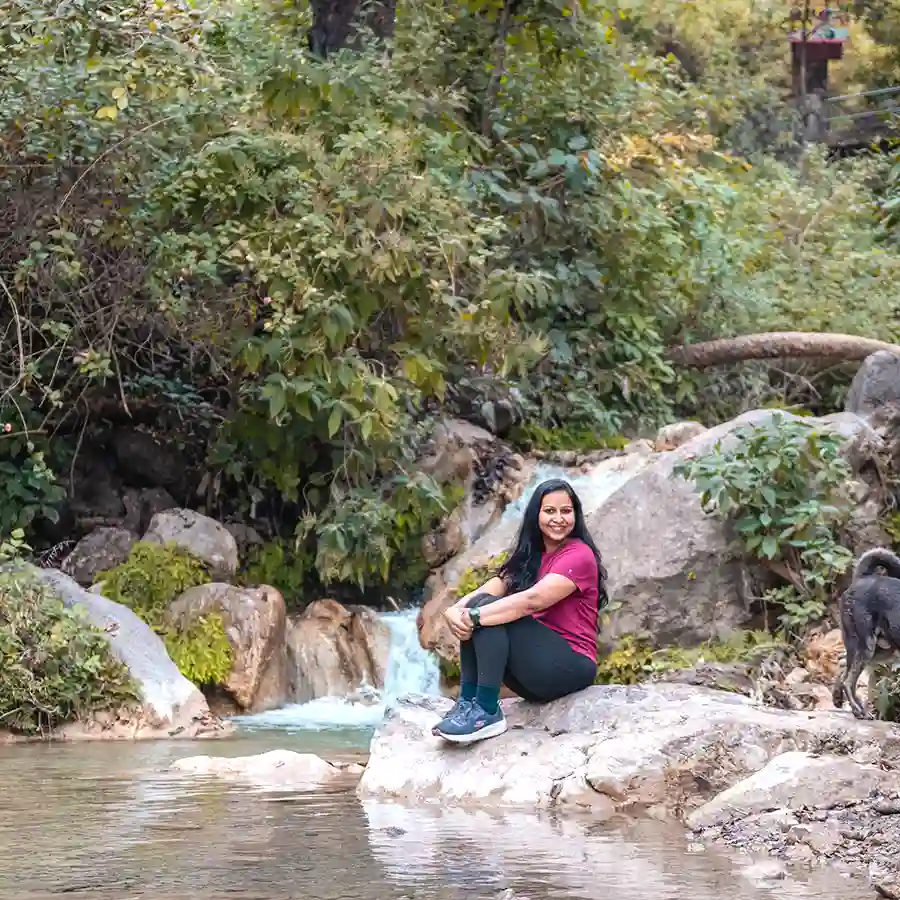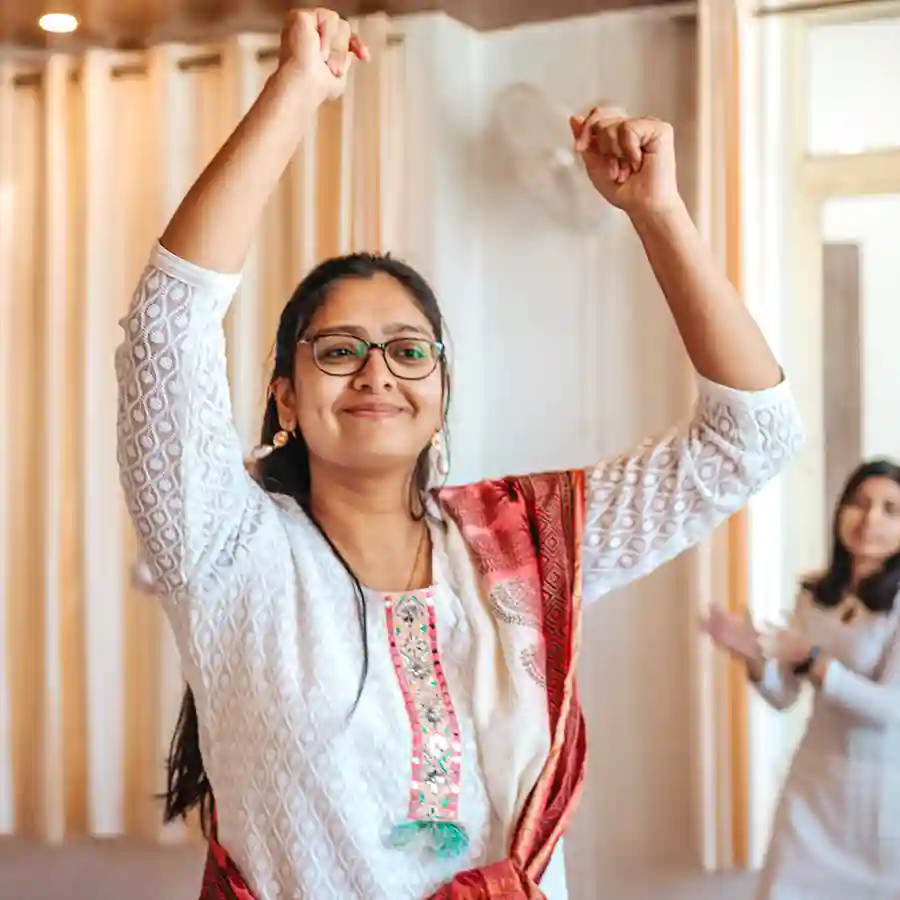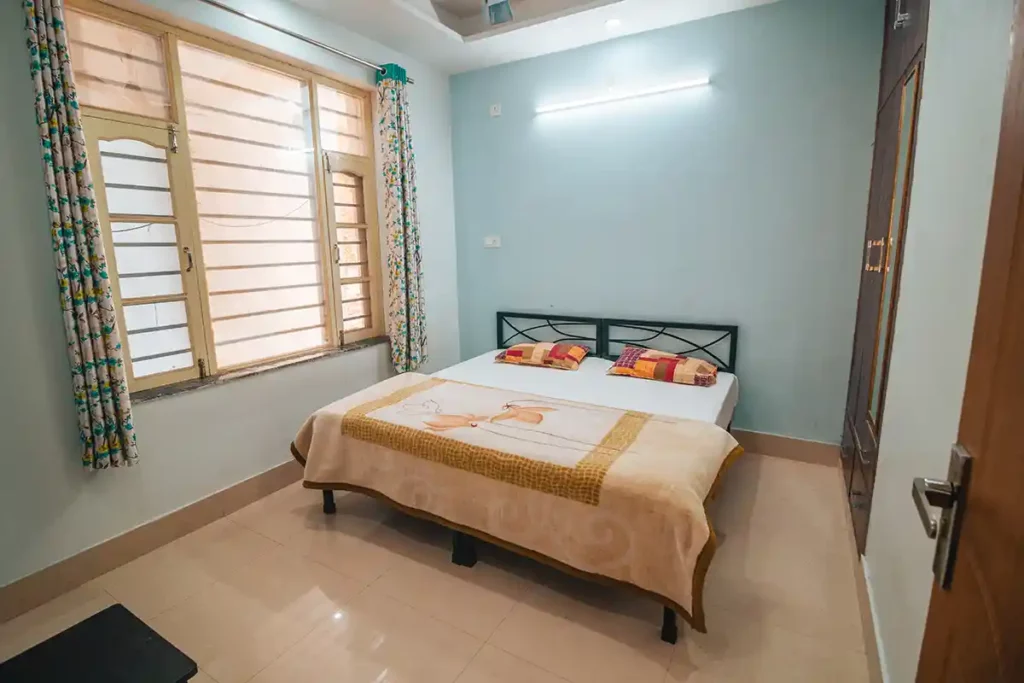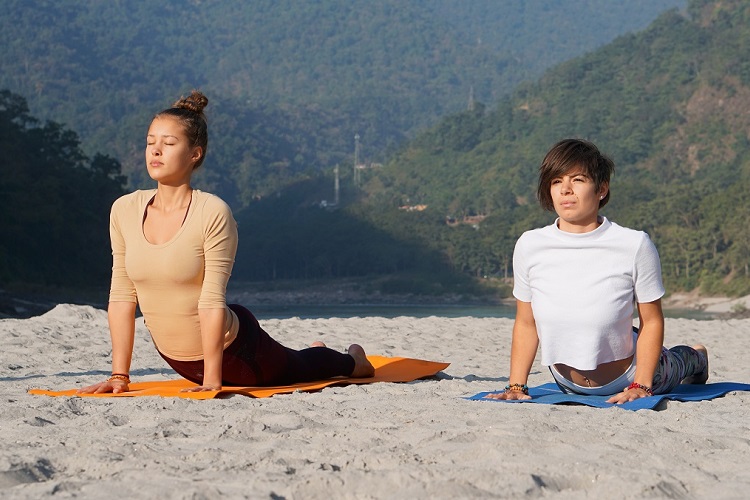
200 Hour Multi Style Yoga Teacher Training Course In Rishikesh India
Price : $800
Our 200 Hour Multi Style Yoga Teacher Training Course is made for them who want to be a versatile yoga teacher in all the yogic forms. Our 200 Hour Multi Style Yoga Teacher Training includes a mixture of Hatha Yoga, Ashtanga Yoga, Raja Yoga and many other yoga forms. This teacher training course is a traditional form of yoga course which suits all age groups.
200 Hour Yoga Teacher Training Course in Rishikesh, India?
Yoga is a spiritual and ascetic discipline, a part of which, including breath control, simple meditation and the adoption of specific bodily postures, is widely practiced for health and relaxation. Well, it could be practiced as a career. To make it a career, Bliss Yoga School has a predefined curriculum which meets the Yoga Alliance standards. Our teachers are qualified to train the trainees. We believe in imparting education which is in depth and provides valuable information to the trainees.
We teach our students a beginner level asana class which is safe and correct. We teach them correct alignment and explain them common misalignments and contraindications for dozens of poses. We also explain the various physical and mental benefits for various types of poses and prepared them to offer modifications of each asana for students with injuries, elderly students and specific needs.
The special part of curriculum is ‘’Supplemental Training’’ which not only provides the knowledge in a particular field but also develops interest in a specific area. In order to provide in depth knowledge to our trainees .these are the hours which take place in the physical presence of the faculty member.
Course Overview
The purpose of mantra chanting in yoga is to generate vibrations and connect with the universe. Each mantra is special and rich with spiritual energy.
- Om Asato Maa Sadgamaya (Mantra from Upanishad)
- Tvameva mata ca pita Tvameva (Sloka on gods)
- Om Tryambakam Yajamahe ( Mantra on lord shiva)
- Om sahana vavatu ( Mantra from Upanishad)
- Guru Brahma Guru Vishnu Gurudevo maheshwara ( Guru stotram)
- Yogena Cittasya ( Sloka on sage Patanjali)
- Hare rama, Hare Krishna ( Maha mantra)
Students will gain extensive knowledge on yoga postures and will increase their strength, flexibility and discipline.
Ashtanga Vinyasa Yoga Course Syllabus
- Surya Namaskar A
- Surya Namaskar B Full Primary Series:
- 1. Padangusthasana
- 2. Padahasthasana
- 3. Utthita Trikonasana
- 4. Parivrtta Trikonasana
- 5. Utthita Parsvakonasana
- 6. Parivrtta Parsvakonasana
- 7. Prasarita Padottanasana A B C & D
- 8. Parsvottanasana
- 9. Eka Pada Padangusthasana A B C & D
- 10. Ardha Baddha Padmottanasana
- 11. Utkatasana
- 12. Virabhadrasana A & B
- 13. Dandasana
- 14. Paschimottanasana A B C & D
- 15. Purvattanasana
- 16. Ardha Baddha Padma Uttanasana
- 17. Triang Mukaikapada Pashimottanasana
- 18. Janu Sirsasana A B & C
- 19. Marichyasana A B C & D
- 20. Navasana
- 21. Bhujapidasana
- 22. Kurmasana
- 23. Supta Kurmasana
- 24. Garbha Pindasana
- 25. Kukkutasana
- 26. Baddha Konasana A & B
- 27. Konasana
- 28. Upavishta Konasana
- 29. Supta Konasana
- 30. Supta Padangusthasana A & B
- 31. Ubhaya Padanghusthasana
- 32. Urdhva Mukha Pashimottanasana
- 33. Setu Bandhasana
- 34. Urdhva Dhanurasana
- 35. Salamba Sarvangasana
- 36. Halasana
- 37. Karnapidasana
- 38. Urdhva Pindasana
- 39. Matsyasana
- 40. Urdhva Padmasana
- 41. Sirsasana
- 42. Urdhva Dandasana
- 43. Baddha Padmasana
- 44. Yogimudra
- 45. Uplutih
- 46. Savasana
- 1.Pawanmuktasana series 1
- 2.Pawanmuktasana serie 2
- 3.Pawanmuktasana series 3
- 4.Surya Namaskar ( sun salutation)
- 5.Chandra Namaskar (Moon salutation)
- 6.Tadasana (palm tree pose)
- 7.Triyak tadasana (swaying palm tree pose)
- 8.Trikonasana (triangle pose)
- 9.Parivirtatrikon asana – revolving triangle pose
- 10.Uttkatasana –chair pose
- 11.Virbhdrasana 1 -warrior 1
- 12.Virbhdrasana 2 -warrior 2
- 13.Virbhdrasana 3 -warrior 3
- 14.Ardha Chandrasana- Half moon pose
- 15.Vriksasana – tree pose
- 16.Parvatasana – mountain pose
- 17.Adho mukha svanasana – downward facing dog
- 18.Kati chakrasana – waist rotating pose
- 19.Malasana – squatted yoga pose
- 20.Garudasana – eagle pose
- 21.Baddha Konasana- bound angle pose
- 22.Rajkapoot asana – pegion pose
- 23.Bhujanghasana – cobra pose
- 24.Urdhva mukha svanasana –upward facing dog
- 25.Matsyasana-
- 26.Setu Bhandasana
- 27.Utrasana
- 28.Dhanurasana
- 29.Salabhasana
- 30.Supta Virasana- reclining hero pose
- 31.Virasana –hero pose
- 32.Vajrasana –thunderbolt
- 33.Gomukhasana
- 34.Balasana
- 35.Dandasana
- 36.Ardha Matsyendrasana
Week 1
- Introduction of Pranayama , Benefits of pranayama , General guidelines
- Clavicular , Thorocic and Diaphragmatic Breathing (Yogic Breathing)
- Ujjayi
- Bhastrika
- Kapalbhati
- Nadi – Sodhana
- Bhramari
- Surya – Bhedi & Chandra – Bhedi
- Sheetali & Sheetkari
Week 2
Sitting postures for pranayama sadhana-
The practice of Mudra hand gestures is an ancient facet of yoga. Performing gestures effects the energy flow of the body and can change a person's spiritual and mental characteristics.
- Jnana mudra
- Chin mudra
- Yoni mudra
- Bhairava mudra
- Shambhavi mudra
- Nasikagra
- Khechari
The practice of Bandhas expands the lung capacity and breathing capabilities during yoga. It also strengthens the entire body from the inside out.
- Preparation
- Uddiyana
- Jalandhar
- Mula & Maha Bandha Teaching
- Teaching
- Doubts
Meditation is a systematic practice that promotes physical, mental and emotional tranquility with the purpose of reaching Samadhi (self-realization).
- Introduction to Meditation
- Breathing Awareness Meditation
- Om / Mantra Meditation
- Trataka
- Dynamic meditation
- Tips for developing concertation
- Silence Practice
- Ajapa japa
- Antar mouna
When a yoga practitioner moves through the various internal states of Yoga Nidra, a profound experience of relaxation occurs. This is called "Turiya," a sensation of pure bliss.
- Basic Relaxation
- Tension Relaxation
- Full Body Relaxation
Yogic cleansing exercises are important to learn how to incorporate your breath and meditate properly during physical aspects of yoga. It also removes the blockages in the energy channels.
- Jalaneti Satkarma (Nasal cleansing with salty water)
- Rubber neti (Nasal cleansing with a rubber string)
- Agnisar Kriya
Proper understanding of the physical body will help to prevent injury before, during and after practice. There are two kinds of yoga anatomy: physical and spiritual. Understanding both types is needed.
- Digestive System
- Respiratory System
- Circulatory System
- Nervous System
- Endocrine System
- Organs
- Bodily systems
- Nadis
- Chakras
- Muscular System
- Skeletal Sytem
- Muscle Functions according
to Joint Movements - Breathing
- Inversions
- Svasana
Guidelines in Studying Asana Anatomy
Anatomy of:
Yoga Philosophy is the foundation of our yoga practice and is the key to earn yogic strength. Through the path of Vedanta Philosophy, you will establish a solid, well-rounded yoga practice.
Patanjali yoga sutras-
- Introduction to the Himalayan Traditiof of Yoga
- Introduction to the different indian philosophy
- History of Yoga
- Yoga Sutra of Patanjali
- Types of yoga
- Eight limbs of yoga
- Yamas and Niyamas(Ethics of yoga)
- Philosophy of Asana
- Concentration and its power
Week 1
Week 2
- 4 aspects of mind
- How to controld the mind
- Samadhi and the goal of yoga
- Introduction to Bhagawat Geeta
- Chakras
- Kundalini
- Science of Karma
- Indian culture and Spirituality
Week 3
Week 4
Students will take turns practicing their teaching skills by performing in front of their peers and teachers.
- Demonstration
- Alignment
- Instructions
A yoga teacher should efficiently perform the practical applications of class planning and preparation. At Bliss Yoga School, our students will learn how to create a positive and peaceful class environment for an enjoyable and transformative experience.
- 1- Positive & conscious communication.
- 2- Friendship and trust.
- 3- Time management
- 4- Qualities of a teacher
- 5- Principles of demonstrating, observation, assisting, correcting.
- 6- Use of voice in class
- 7- Mental & emotional preparation for teaching.
- 8- Class preparation
- 9- Step by step class structure planning.
Students will take turns practicing their teaching skills by performing in front of their peers and teachers.
- Written Test
- Oral Test
- Attendance
- Performance
- Behavior



